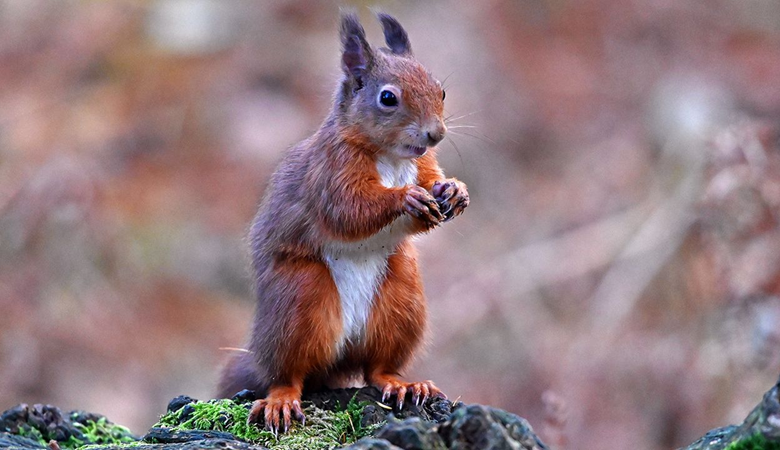To conserve red squirrels, conservationists are using artificial intelligence

Conservationists claim that an artificial intelligence (AI) tool that has been trained to distinguish between grey and red squirrels might be “an absolute game changer”. According to its creator, the Squirrel Agent system can distinguish between the animals with 97% accuracy after being taught on thousands of photos of them. Then, it may be used to automatically restrict who has access to squirrel feeders, allowing only red squirrels to enter those with food and only grey squirrels to enter those with contraceptive paste in place of food.
“It’s a real showcase of what AI can do,” said Emma McClenaghan, co-founder of Genysys Engine, which developed the tool.
“It’s working in real time to do a task that we don’t have enough [human] volunteers to do.”
Conservationists claim that an artificial intelligence (AI) tool that has been trained to distinguish between grey and red squirrels might be “an absolute game changer”. According to its creator, the Squirrel Agent system can distinguish between the animals with 97% accuracy after being taught on thousands of photos of them. Then, it may be used to automatically restrict who has access to squirrel feeders, allowing only red squirrels to enter those with food and only grey squirrels to enter those with contraceptive paste in place of food.
The significant drop in red squirrel populations can be attributed in large part to grey squirrels. This is due in part to their sheer numbers and the fact that they may carry a virus to which they are immune but which red squirrels cannot contract. They came to the United Kingdom about 200 years ago.According to Mr. Glendinning, “red squirrels are still around in Scotland and Ireland, and there are some island populations like Anglesey and the Isle of Wight.” “But mainland England and Wales is in dire straits, and they will become extinct if we are unable to reverse this trend.”
Despite its name, not all red squirrels are red, which makes preservation efforts much more difficult. Even though they share the same color, other characteristics such as their tails, ears, size, and weight can help differentiate them from the far more common grey squirrel population. Human observers find the detection process to be time-consuming, but Squirrel Agent employs artificial intelligence (AI) to quickly analyze all of those marks and determine which is which with a very high degree of accuracy.
Genysys Engine says the next step in the evolution of the tech is to go beyond just distinguishing between the types of squirrel and instead identify individual animals.
This will be done, Emma McClenaghan says, by focusing on their whiskers, which are unique to each animal.”Whiskers are like a human fingerprints,” she says.By distinguishing between each creature’s whisker tips, as well as their base and length, she hopes AI will enable wildlife experts to track and monitor individual members of the population. “Over time this data will build up, allowing scientists and researchers to start tracking family lines,” she says.
There are already other instances where environmentalists can benefit from AI’s capacity to digest vast volumes of data rapidly. To identify areas where animals had survived, the World Wildlife Fund (WWF), for instance, used the technology to analyze millions of photos of a vast region of Australia that had been destroyed by bushfires. Hobbyists have also adopted it; last year, a British man told BBC News that he had created a device called the Furbinator 3000 to prevent foxes and badgers from damaging his Surrey garden.






